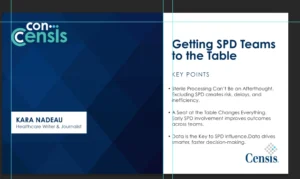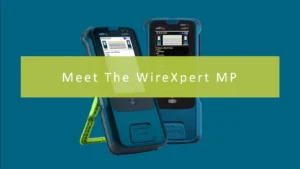Follow us on social media for the latest updates in B2B!
Twitter – @MarketScale
Facebook – facebook.com/marketscale
LinkedIn – linkedin.com/company/marketscale
Why COVID-19 Should Spur Digital Transformation in Higher Ed
At the end of 2019, college presidents were asked what they saw as the greatest challenges for higher education in 2020 and the results are fascinating given the way the year has gone. Although none of the responders knew just how drastically 2020 would change higher education, their responses still reflect the most valid concerns in the industry – digital transformation.
It’s become clear that COVID-19 has effectively become the “tech tipping point” for higher education, and although the current educational landscape poses significant challenges, it also offers unparalleled opportunities to develop long-term digital transformation and new strategies in academia.
Related content: 7 examples of digital transformation in higher ed
The current educational landscape provides colleges and universities with the opportunity to evolve the traditional education model into one that not only addresses their short-terms needs for 2020, but also helps tackle the biggest challenges in education – including affordability, student-centric learning, and adult studies.
Making education more affordable
For many students, the cost of higher education prevents them from attending a traditional learning institution. With a world-wide closure of educational institutions, it’s time for college administrators to take a look at how eLearning programs can improve accessibility for more students.
A successful eLearning program requires an infrastructure that can support the various ways students and instructors interact–a screen full of text or a recorded lecture will simply not engage students. Furthermore, no matter how affordable an eLearning platform might be, if it does not engage the student, it will not be cost-effective. The most successful eLearning platforms will provide:
- A virtual classroom, which includes features such as a whiteboard, live class recording and the ability to run PowerPoint presentations or videos.
- Enough storage to allow instructors to upload all materials at one time so students can learn at their own pace.
- The ability for instructors to personalize instruction without impact to the primary course content.
- Tests and assessments that allow professors to create exams in different formats, including multimedia exams.
- Mobile capabilities that allow learners to participate from any location using mobile devices such as smartphones or tablets.
No matter what platform or tools an institution chooses to use, colleges and universities need to shift their focus to how, when, and where students learn to be truly effective in today’s virtual world. Much like how digital transformation takes a look at the customer journey, institutions need to focus on how students navigate their way from initial contact through graduation and beyond.
Providing student-centric learning through graduation and beyond
The most pervasive barrier to a student-centered approach is the existing culture at most institutions of higher learning. Faculty are focused on what the student needs to know, not on how the student wants to learn that information.
Colleges and universities should evaluate what steps they can take to meet student needs. For example, finding ways to optimize course schedules can make it easier for students to enroll in high-demand courses that are required for graduation. While offering core classes at 1:00 pm twice a week makes it impossible for adult learners to participate, providing a blend of in-person and online delivery methods makes it easier to juggle work or family schedules.
Furthermore, students need help when it comes to providing assistance with a course or deciding which class to take. With today’s limited in-person resources, finding help with degree programs and graduation requirements can be frustrating for students. Developing a tool that can help students map out their degree program, plan out their schedules and monitor their progress towards graduation – and allow them to access it as needed – can help keep students on track while providing the comprehensive experience that they want.
Georgia Southern University is a good use case of how to use online learning tools. By collecting data from an online learning system, Georgia Southern was able to predict a final passing grade with 82 percent accuracy at mid-term and with 87 percent accuracy by week 16. Armed with this data, the university plans to allocate resources to improve graduation rates.
Bridging the gap between colleges and continuing education
Adult learners and working professionals don’t always have the flexibility in their lives to attend traditional classes, but they represent a largely untapped market for higher education institutions.
Traditional four-year institutions have tried to address adult students’ needs without much success, offering credits for prior work or military experiences, developing weekend-only degree programs, and providing childcare services. The most successful have been online programs such as Southern New Hampshire University and Western Governors University, which offer highly-flexible degree programs.
Faced with a changing landscape in higher education, institutions should rethink how to create an environment that is more conducive to the lifestyle of working students. In other words, higher education institutions must work with corporate partners to design learning environments that benefit both the employer and the employee.
Many employers offer some type of educational benefit to attract and retain employees. For example, employers are more accepting of micro-credentials as an educational option, especially in industries where a labor shortage exists. For many, the competency is of more value than the degree, and this is something higher education institutions should note. By using micro-credential classes as building blocks to a more formal degree, universities can establish relationships with adult learners that go beyond a single course and create pathways for adult students to acquire industry-specific certifications that can be leveraged toward a degree.
Another option is to create an experiential learning option that builds on existing work experience and incorporates existing on-the-job opportunities. For adult learners, internships, apprenticeships, and capstone projects are separate assignments that require time away from family and work.
Experiential learning allows students to incorporate their work engagements into an academic assignment. Rather than an added requirement, this option lets students identify opportunities in their work environment that can provide academic credit. This form of learning is far easier in today’s connected environment, where technology can link work and education seamlessly. For example, they can offer online classes that allow content to be delivered to a student’s phone or computer during working hours. With the right technology, institutions can offer educational solutions that are more attuned to their working students’ needs.
The current pandemic presents a huge opportunity for higher education to transform itself in response to changing learning environments. As colleges and universities look to the future, creating the right digital strategy will enable instructors to provide a learning experience that better aligns with student needs.
Be sure to subscribe to our industry publication for the latest news, videos, and podcasts in the Education & Technology Industry.








